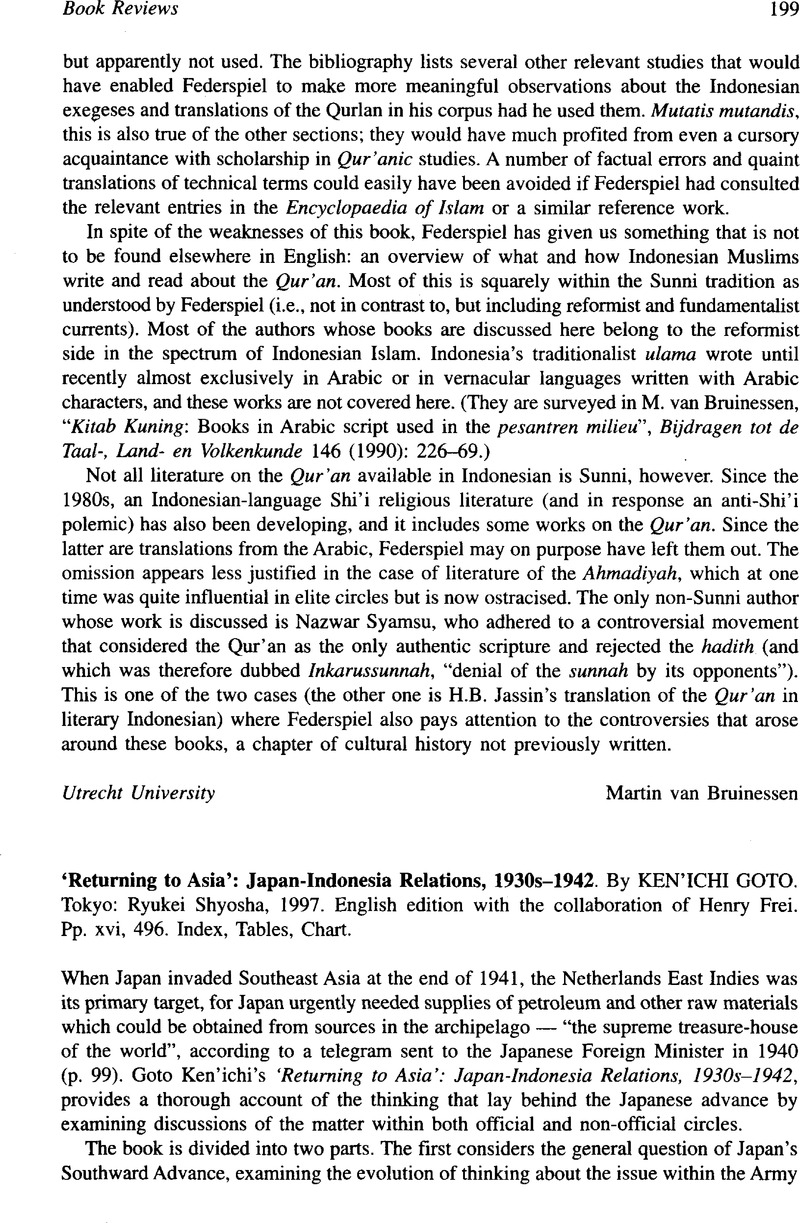No CrossRef data available.
Article contents
‘Returning to Asia’: Japan-Indonesia Relations, 1930s-1942. By Ken'ichi Goto. Tokyo: Ryukei Shyosha, 1997. English edition with the collaboration of Henry Frei. Pp. xvi, 496. Index, Tables, Chart.
Published online by Cambridge University Press: 11 August 2011
Abstract

- Type
- Book Reviews: Indonesia
- Information
- Copyright
- Copyright © The National University of Singapore 1998
References
1 Notably, for Indonesia, Shigeru Sato, War, Nationalism and Peasants: Java under the Japanese Occupation, 1942-1945 (St. Leonards, NSW: Asian Studies Association of Australia in Association with Allen & Unwin, 1994)Google Scholar, and Kurasawa, Aiko, “Mobilization and Control: Social Change in Rural Java 1942-1945” (Ph.D. diss., Cornell University, 1987)Google Scholar, published in Indonesian translation as Mobilizasi dan Kontrol: Studi tentang Perubahan Sosial di Pedesaan Jawa 1942-1945 (Jakarta: Grasindo, 1993Google Scholar) and in Japanese as Nihon Senryoka no Jawa Noson no Henyo (Tokyo: Soshisha, 1992)Google Scholar.
2 For example, Yu-Jose, Lydia N., Japan Views the Philippines, 1900-1944 (Quezon City: Ateneo de Manila University Press, 1992)Google Scholar; Shimizu, Hiroshi, “The Japanese Fisheries based in Singapore, 1892 to 1945”, in Journal of Southeast Asian Studies 28,2 (Sep. 1997): 324–44CrossRefGoogle Scholar; Sabihah Osman, “Japanese Economic Activities in Sabah from the 1890s to 1941”, Journal of Southeast Asian Studies (this issue).




